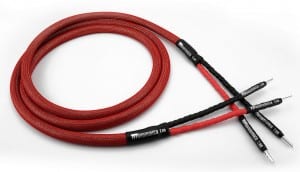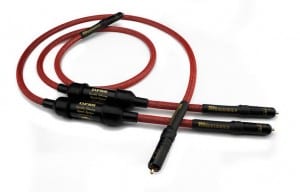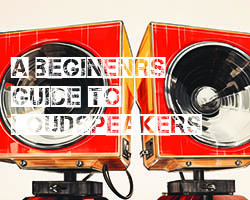Anyone who thinks reviewing Hi-Fi components is an easy job, let me persuade you otherwise. Firstly. You have to entirely switch off all your own personal preferences and be neutral minded to begin with, lest preconception and bias sets in – no easy task for sure. Secondly, all the emotions and gut feelings have to be well locked away and for you to remain detached and dispassionate. Part of the review process is also to study what the manufacturer has to say about their product, usually swathed in plenty of Marketing wrapping and dare I say it, pseudo-scientific babble as well and also disentangling their emotions and passions which may be included, from pure fact. It pays to find out how long they have been in business and what their design criteria aims at for the reviewer to weave into the resulting review. I have seen enough new ways to slice bread to make it the best ever and washing powder that washes whiter than white, to last me a lifetime so thankfully I am immune to all that. The purpose of writing this seemingly useless paragraph is to tell you that there are some components you evaluate that throws it all straight out of the window and you think to yourself “Oh, what the heck” and to enjoy what you hear on a personal level and set aside the review until later. Other times you can tear your hair out when the partnering components are simply not gelling together and this review is one of those, needing different amplifiers with different qualities to come to a conclusion, plus a heady cocktail of cable changes to serve a particular purpose. Intrigued? Read on . . . . . . .
And so we get back into dispassionate mode and study what the Audiomica Laboratories Erys Excellence interconnect and Celes Excellence speaker cables have to offer.
Audiomica hail from Poland and are one of the growing band of cable makers that are moving away from the familiar standard co-axial type cable construction and really looking into what makes a cable tick.They say a lot of research and development has gone into their cable designs and to their credit, they do provide plenty of somewhat variable documentation to support their claims for all of their cables, which is quite an extensive range I believe. You either accept or reject what they say of course. Personally, it bothers me not.
Construction
This interconnect lies mid-range at number five in a series of eight in the Audiomica interconnects lineup and this particular cable sports a DFSS “pod” situated along the cable’s length, which I believe is an extra cost option above the ‘standard’ Erys cable. It is deemed by Audiomica as one of the “Excellence” series which shares the same bright red outer sheath colour as the “Red” series (Yes, it also confused me too). Be aware too that Audiomica constantly refine and improve their product ranges, which did lead to some misunderstanding over which cables I was actually reviewing, as they had incorporated one or two changes to the review sample.
Audiomica say the DFSS pod contains filtration components designed to address distortion with what I understand to be ferro-magnets and spacers placed for accurate gap and alignment, which they term as “Double Filtering Signal System”. What that means to you and me is neither here nor there, provided it delivers the sound we expect from it and for the more curious amongst us to pay a visit to Audiomica’s website which should provide you with the technical information, although the translation from Polish to English is quite challenging to assimilate.
Outwardly, we see a smart bright red outer woven sheath, the DFSS pod situated some 30cm from one end of the cable and silver locking RCA phono plugs all round. Conductor material is said to be pure copper with a copper screen. None of the WBT locking RCA connectors have a polarity marking, so connecting up is a bit more considered when doing the “over rack pike dive” hunched over to connect it all up in a poor light. Even a quarter inch piece of red heat shrink band at each end of one cable in the pair would cost pennies and make connecting up less of a blind fumble. The cable supplied for review at 1.5 metres long has a price tag of €958.00 and that puts it squarely into a fiercely competitive territory within the circa £1,000 bracket of the interconnect market.
CELES Excellence Loudspeaker Cable 
Construction
Cloaked in the same bright red outer sheath as its stable mate the Erys interconnect, it lacks any “pod” in its construction and is said to be multi-stranded copper of 99.99999% purity. The main body of the cable is some 18mm in diameter bifurcated into two ‘tails’ of around 20cm in length, the junction masked by black heat shrink with the Audiomica Laboratory name printed on it. Silver (plated?) “Z” banana plugs were fitted to the review sample which do an admirable job of gripping the sockets. Reassuringly, each of the tails is coloured red and black with the correct polarity for installation, unlike the Erys interconnect which isn’t marked for polarity. Priced at €980.00 for the 2.5 metre pair supplied for review.
Sound Quality
My first report will be the Erys Excellence interconnect paired with the Celes Excellence speaker cable and then partnered with another brand of speaker cable. This will hopefully determine what the Erys’s performance is for those that are looking to purchase the interconnect on its own, or conversely, for those interested in the performance of the Celes speaker cable alone, so other interconnects will be substituted into the chain.
The ERYS and CELES Pairing Sound
My first impression of the Erys and Celes paired sound was generally very good indeed, with fast crisp dynamics, excellent separation, a terrific sound stage with plenty of depth and height. Clean concise midrange and a powerful bass also greeted me as well, so all green lights are on so far. When it came to the treble, this presented a paradox; it was very much clean, crisp and highly accurate, but recessed somewhat. Cymbals sounded further back in the mix than I was accustomed to, seemingly slightly out of balance. At the time they were connected to an amplifier that had been loaned to me which I was not wholly familiar with, so back into the system went my resident amplifier, which of course I know intimately.
Now, the sound was full of energy and giving me a ‘big’ sound at normal listening levels. Explain yourself Dom. Yes I will. The term ‘big’ here means that the sound rose from a zero baseline of silence to a perceived amplitude in excess of what I would normally expect at a given volume setting, which suggests a higher dynamic headroom. How these cables accomplished that is beyond my understanding or even speculation, but hear it I did and did cause a bit of an upset during my evaluation. The treble too kept accurate track with the bass and midrange now and the recessed nature of that frequency band was now in perfect alignment, placed equally within the total sound landscape so I no longer had to listen out for it. I was enjoying this sound so immensely, I almost forget to put my dispassionate reviewer’s hat back on again. Bass was thunderous and weighty, yet still under control. Mid-band, particularly vocals, had a silky richness with crisp inflections that enhanced rather than detracted from the performance and that TREBLE, oh yes, that treble was the icing on the cake. I have not heard such exquisite treble for a very long time and with such clarity and precision too. No splash, no fizz, no tizz, no nasty artefacts, so rich in textures and palpability, that married very well with the mid-band seamlessly too, so I will say it again, it is accurate almost down to atomic clock level. I think I am in love. Stop it Dom.
So to translate these observed sonic snippets into some music some of you might be familiar with, I put Supertramp’s “Crisis, What Crisis?” in the CD drawer and pressed play to hear my favourite track on the album, ‘Lady’. This track has raw edges to it that comes straight at you in a direct way, which was not unexpected. However, when the music got somewhat hectic with the volume turned up, some of the finer details got a bit lost, yet everything held together fairly well. The vocals sounded like they were recorded elsewhere like in a cavern, there is so much echo and reverberation added, but they still sounded yards deep throughout the entire track, while bass and drums are recorded to the foreground and form the underpinning of the track. Kick drum was solid and tangible almost, cymbals are represented by hi-hat beats which never vanished into the mix even when the band was playing at frenetic levels. The last one third of the track is comprised of the bass guitar in a 1 – 3 repetition, the hi-hat beat, clicking of fingers and simple vocals. Delightfully simple, but not exactly challenging either, so I suppose it is part of that track’s charm. Track 8 is another favourite on this album called “Just a Normal Day”. A slower pace perhaps, a touch on the melancholy side as well, but the track has piano, saxophone, violins and a haunting vocal that either touches your emotions or leaves you rather cold, depending on how well it all hangs together, which it did with the Erys and Celes pairing.
Next into the CD drawer went Fleetwood Mac’s live album “The Dance”. Track one “The Chain” starts of off with solo kick drum and various other percussion instruments in the background. This kick drum beat set the floorboards off in my listening room and could feel it with my feet the same time as I was listening through the speakers, nor did it diminish during the entire track and remained consistent. With a live album of course we also get to hear the audience clapping, cheering and whistling and that is quite a challenge to recreate accurately without sounding like paper tissue being torn and crumpled up. Clapping in particular can all too often be tainted with a “shoosing” sound, but not so with the Audiomica cables it wasn’t, each individual hand clap of what seemed like hundreds and more all around you was eerily recreated with realism. Track three on the album called “Everywhere” has a pounding kick drum and Maracas playing throughout the track so I could follow both with ease, whereas there have been many cables I have heard that simply couldn’t accomplish this. However, that slight muddling manifested itself once more at high volumes and I was starting to become perturbed by this, as I half expected it with the Supertramp recording with its raw energy but not with Fleetwood Mac’s recording which I know so well. Puzzlement has set in now.
So, on to the next step and see if there is a star performer out of the two, or are they the inseparable match?
Sound Quality – ERYS Interconnect Alone
I then paired the Erys interconnect with a pure silver speaker cable and straight back to the Fleetwood Mac album. Being constructed of silver rather than the copper of the Celes, I was expecting a different ‘flavour’ of sound from the silver speaker cable. The kick drum now had a small measure of additional solidity, plus a modicum of extra weight to it, but not to a large degree and just didn’t sound right with a darkened midband. Treble though acquired a misty veiled sensation to it, not as crisp and realistic as I had with the Celes speaker cable in situ.
In for a penny, in for a pound they say, so a real left field choice now with the TQ Blue speaker cable, simply because it was there available to hand rather than digging about in the cable cupboard, so not really a conscious choice by any means. Seems the Erys interconnect won’t jump into bed with just anybody. Bass was not as solid, it was ponderous and loose by comparison, midrange had become a bit vague and yet the treble had plenty of sparkle and vitality although not with the same accuracy and fidelity as with the Erys/Celes pairing.
Sound Quality – CELES Excellence Alone
I tried a SLIC Innovations Eclipse C interconnect with the Celes Excellence speaker cable and that fared much better with a close match to the Erys in overall sound. Good solid bass, clean mid ranges and a whisker away from the Erys’s treble. It might as well have been a mile to be honest. Still heartbroken. Hold on a minute, where has the muddling at high volumes with the same setting gone to? Aha, time to investigate further and found that my resident amplifier and the Erys interconnect were having a bit of a synergy clash going on, so at least that particular mystery was solved. I installed another amplifier and there was no muddling whatsoever from then onwards.
I then paired the Celes Excellence speaker cable with the Epiphany Acoustics Atratus 3 interconnects (Recently reviewed in Hifi Pig) to see if love could blossom between these two. Nope. Biggest loss was bass power and dynamics, but midrange and treble stood up well, although where has the object of my desire gone – THAT treble? Treble was crisp and clear, but that stunning corporeal touchable realism was not there as it was with the Erys interconnect.
At that point I was coming to the realisation that it was probably futile to proceed any further along that particular avenue, because it seemed that just like Laurel and Hardy or Morecambe and Wise, the Audiomica pairing were a really great act together and no true solo performers in their own right without the other.
Conclusion
The things us reviewers do for our craft and your enlightenment dear reader. After a lot of back breaking dives leaning over the rack and repeatedly plugging and unplugging cables and amplifiers, I am shattered. Still, I hope that you are forming your own opinions about how the Audiomica Laboratory cables sound from my writings and perform together superbly as a duo.
So, to sum up then, the pair produced a powerful and solid bass with articulation and resolution aplenty, a liquid transparent midrange that had clarity and sophisticated enunciation, natural and detailed, not forgetting the exquisite treble qualities that got me wanting it’s babies, it was that good.
To follow on from that, I don’t really know how much seriousness I should attach to the ‘loudness’ in sound I was hearing with the review pairing at high volume levels – and I mean really high. I recall that these cables produced a high dynamic headroom right from the start, which no other cable partnerships did, so was it a case of input overload somewhere in my system? Probably. Maybe nobody else is as crazy as I am in winding the volume control that far round? Certainly! As it turned out, it was my amplifier which wasn’t gelling well with the Erys interconnects, as another two amplifiers I used were just fine. It is rather unusual for my resident amplifier to behave this way, but I will dust off the usual faithful get-out clause reviewers use and say that an audition will determine the outcomes for your own personal circumstances, as I would be very loathe to unfairly blight these cables from my time with them, because I think their performance together overall is very, very good indeed, so I will give my recommendation to them.
I would have them just for that treble and midrange quality alone and teach myself some disciplined restraint with the volume control. Some hope. There, I’ve said it and the pleading note addressed to Santa Claus is winging it’s way to him as I write this.
Build quality: 7.9/10
Sound quality: 9/10
Value for money: 8.5/10
Overall: 8.4/10
Note: Scored as a pair.
Recommended for: Sounds best as the pairing as described above, in a system capable of tonal accuracy. Audition is advised.
Prices
Erys 0,5m – €730
Erys 1m – €828
Erys 1,5m – €958
Celes 2,5m – €980
Celes 3m – €1198
Celes 4,5m – €1415








































































































































































































You must be logged in to leave a reply.